job titles

Job titles are important. Very important. But this doesn’t mean they should dictate everything. Job titles should be warranted. They should be earned.
This doesn’t mean, for instance, that an art director can’t let a junior design act as lead designer on a project. In fact, it means quite the opposite. The only way you can grow in your field is to take on more challenging projects than your title dictates.
In the career trajectory of an interactive designer there’s a substantial amount of time you can operate in a ‘silo’ and create designs that you and you alone are responsible for. I have known many visual designers, senior visual designers and art directors who have worked within a team of developers and Human Experience designer where they are the only visual designers on the project – no one junior assisting them and no one senior to them, guiding the direction of the final design.
The art director level in the career of a visual designer represents the point at which it’s no longer about your design chops alone that make you great at your level – how fast and precise you are in Photoshop, or how beautiful you can animate a scene. If we take a quick jump into the etymology of these positions, we notice that the change comes when ‘designer‘ is replaced with ‘director‘. As an art director, you’re no longer designing on the project, you’re directing the design efforts of others (ideally). As a creative director you’re directing the conceptual and strategic efforts of others.
Getting to a director level is also about how well you present your ideas and designs to your internal team and your client. It’s about how you work with and mentor junior designers. It’s also about how you delegate responsibilities. It’s about management.
Despite these characteristics, you’d be surprised how many people consider themselves art directors. This doesn’t mean the people I’ve known who have been art directors couldn’t perform the non-visual tasks I mentioned above or that they’re not worthy of the title. It just means they’ve never had the opportunity to (disclosure – I’m guilty of this ‘silo’ work lifestyle too).
We have to be very careful when we assign titles to people within the companies we work for. I don’t give a shit if you’ve worked for a company for 20 years. If you’re not qualified to be a manager or a director or a senior vice president, then you shouldn’t be one. End of story. What salary compensation you give someone is another story. That is something between your management and you, and doesn’t get added your email signature next to your email address and job title.
When people who are given titles they never live up to, it might give that person an ego boost, but it demoralizes others in the company who look to them for vision, direction and strength and never receive it.
Giving the wrong job titles to the wrong people effectively makes job titles meaningless, and inevitably confuses everyone, making them question their own worth in the company.
CNN.com – no visual heirarchy
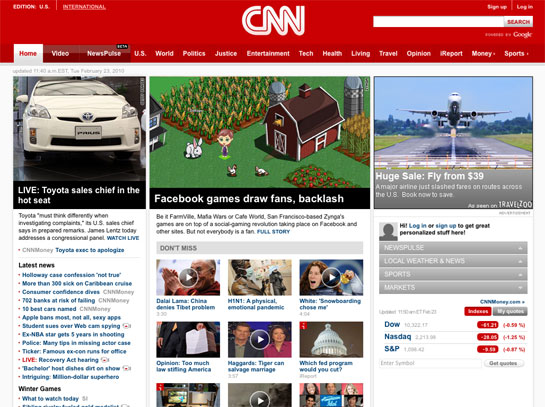
I have to say, since they redesigned their site in 2009, there’s absolutely no heirarchy on the homepage of CNN.com.
Apparently a spotlight on Facebook games is more important than the biggest recall in automotive history by Toyota.
Unless you were looking at the advertisement on the right first.
Feltron 2009 Preview

I just received this link from Nicolas Felton on the progress of the Annual Report I ordered.
I can’t wait.
Nintendo ‘fad’ continues to kick ass
I concur with Ars:
We’re past the point where anyone can call the Nintendo Wii a “fad” with a straight face. Nintendo’s console outsold every other system combined, moving 3.81 million units. The Nintendo DS was close behind, with 3.31 million systems sold. The closest competitor? The PlayStation 3 with 1.36 million sold.
Michael Croghan
I visited my family this weekend and my parents and I got on to the topic of family history and artifacts. Then my father broke out the Envelope.
The envelope contains documents, certificates and other printed matter from his family. I’ve seen it before, but we decided to look at the contents again (with my prodding).
I explained to my father that these papers are important for reasons other than his designer son loves retro graphics and typography. It would be great to get these things framed and protected so we share them and have them last. To my father’s credit, aside from the old envelope they were kept in, he’s done a great of keeping everything safe, dry and away from sunlight.
Below is one of the more interesting documents that belonged to my great, great Uncle Michael, whom my father (Michael Mulvey) was named after.
It’s a Declaration of Intention, in which my great, great uncle renounces his allegiance to the King of Great Britain after leaving Ireland for the United States of America (click on the first image to see a bigger version):
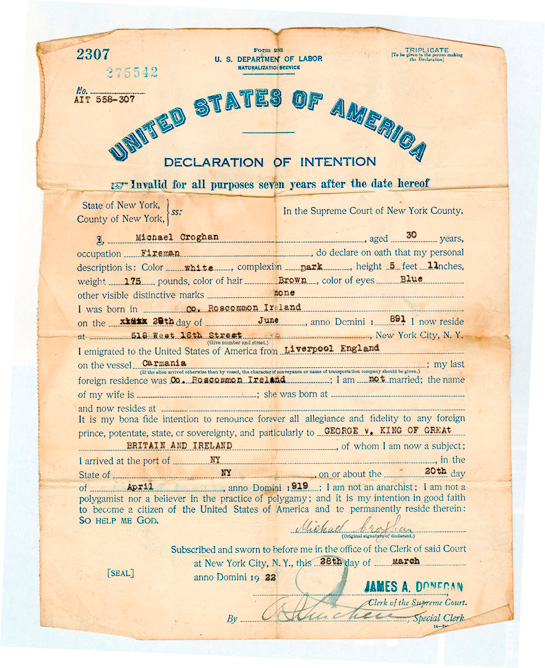


Particular details I love:
– His color is white, but his complexion is dark
– He renounces his allegiance to any foreign leader particularly George V, King of Great Britain and Ireland (remember, Ireland used to be controlled by England)
– He is not an anarchist or a polygamist
Acrobat.com – well designed
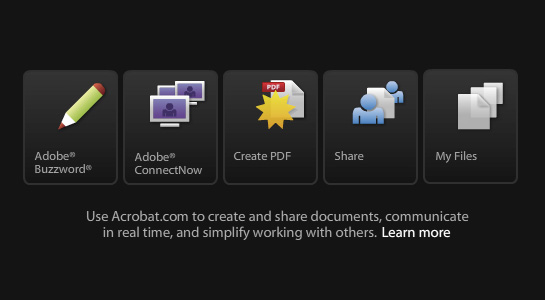
So Adobe has (officially) launched Acrobat.com. I’ve been playing with this service since last year and I love it (I actually posted about BuzzWord back in November 2007), but now they’re offering business subscriptions and it’s officially out of beta.
I’m going to avoid the hyperbole that’s all over the web right now. I won’t entertain questions like ‘Will Acrobat.com bitch-slap Google Docs and Microsoft Office?’.
What I’d like to focus on is the quality of services offered and their attention focus on design.
BuzzWord, ConnectNow, and the rest of the suite are all offered as online Flash (Flex) applications. While a pixel-perfect GUI, smooth interactions and tight engineering aren’t guaranteed with Flash applications, they are certainly possible and Adobe has achieved all of these.
While I don’t consider Adobe a ‘design’ company, I definitely see a distinct difference between Adobe and Google.
It’s the same difference I see between Apple’s iPhone operating system and software and it’s competition – Google Android – there’s a level of sophistication and design that just isn’t present in Google Docs or Google Android.
I wouldn’t quite put Google in the same category as Microsoft, but there’s no question that they’re both engineer-driven, not designer-driven. Earlier this year, we heard from the former Visual Design Lead at Google, Doug Bowman, on what’s it’s like to be a designer inside Google:
When a company is filled with engineers, it turns to engineering to solve problems. Reduce each decision to a simple logic problem. Remove all subjectivity and just look at the data. Data in your favor? Ok, launch it. Data shows negative effects? Back to the drawing board. And that data eventually becomes a crutch for every decision, paralyzing the company and preventing it from making any daring design decisions.
Now I’m sure Adobe is filled with hundreds of engineers as well, but it’s clear from the execution of Acrobat.om that there’s much more of a designer-engineer balance.
As there should be.
Feltron 2009
Nicolas Felton updates his site for 2009 (via ChangeTheThought).
…and of course he did logo for one of my favorite lower east side bars:
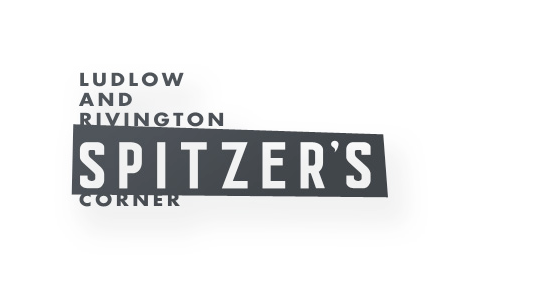
Basically, yeah.

The new iPhone 3GS.
Stretch it some more, keep going…
Brand New: Bing sets New Record in Horizontal Scaling
Armin tells it like it is on the Bing logo:
This is like setting the resolution of your screen to 6,000 pixels wide by 1,000 high. I can’t even imagine how someone arrives at a design solution like this. The shapes resulting from the strenuous horizontal scaling are simply too unflattering and unattractive. There is bad taste and then there is this.
Dodge Challenger

I kinda want one of these right now. Actually, I want one pretty bad.
Stay Vigilant

illustration: Mark Mulvey
Nice Sites

Jeremy Boles – I love the use of Javascript to slide to each section. (found at CSS Remix)
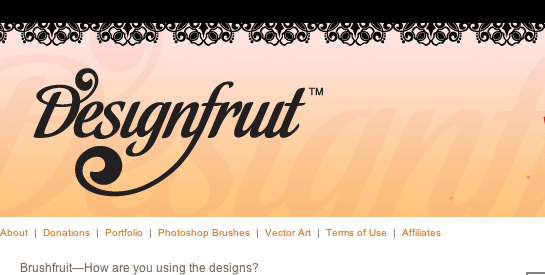
Design Fruit (found at jeremyboles.com)
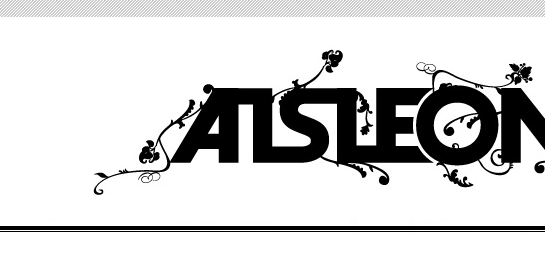
Aisleone – good design blog with a beautiful logo.
My Space
After 3 years, I’ve cancelled my MySpace account. I realized that I don’t use it. Ever. I’m also 29 so it’s not really meant for me. And unlike Mike Davidson, I don’t plan on firing up any new accounts elsewhere. It’s time to trim the fat for spring.